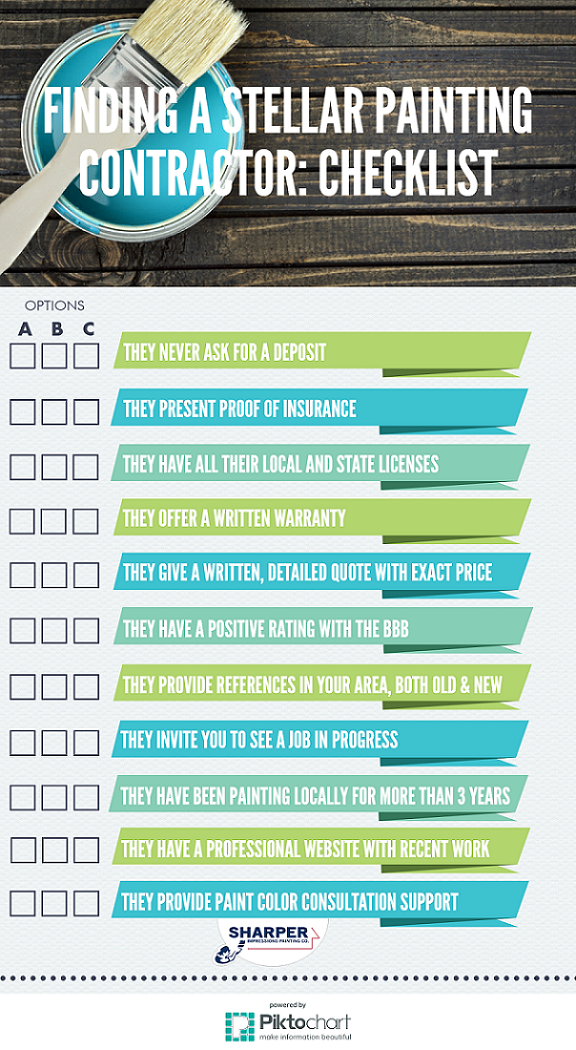Learn More About The Ways In Which Seasonal Elements Can Influence The Success Of Industrial Outside Painting And Figure Out The Very Best Times To Accomplish Long-Term Outcomes For Your Task
Learn More About The Ways In Which Seasonal Elements Can Influence The Success Of Industrial Outside Painting And Figure Out The Very Best Times To Accomplish Long-Term Outcomes For Your Task
Blog Article
Published By-Ford Browne
When you're intending a business outside paint project, seasonal factors can make or break your outcomes. You'll want to consider just how temperature and moisture effect paint application and drying times. Choosing the appropriate period can guarantee your paint sticks correctly and lasts much longer. However which seasons are really the most effective for this type of work? Let's discover the key elements that can affect your task's success.
The Impact of Temperature Level on Paint Application
When you're planning a commercial outside paint task, the temperature level can significantly influence how well the paint sticks and dries out.
Ideally, you wish to paint when temperatures range between 50 ° F and 85 ° F. If it's as well cold, the paint might not treat effectively, resulting in issues like peeling or cracking.
On residential painting twin cities , if it's too hot, the paint can dry out also rapidly, preventing correct attachment and leading to an uneven surface.
You should additionally think about the time of day; early morning or late afternoon provides cooler temperature levels, which can be more beneficial.
Constantly check https://www.homesandgardens.com/interior-design/paint/a-guide-to-matte-paint for the details paint you're using, as they frequently offer advice on the perfect temperature level array for optimal results.
Moisture and Its Result on Drying Times
Temperature level isn't the only environmental variable that influences your business exterior paint project; humidity plays a significant duty too. High moisture degrees can reduce drying times considerably, influencing the overall quality of your paint task.
When the air is filled with dampness, the paint takes longer to cure, which can lead to concerns like bad bond and a greater risk of mold growth. If you're repainting on a particularly damp day, be planned for extended delay times between layers.
It's critical to monitor local climate condition and strategy accordingly. Ideally, go for humidity degrees in between 40% and 70% for optimal drying.
Maintaining these consider mind guarantees your task stays on track and provides a long-term surface.
Best Seasons for Commercial Exterior Painting Projects
What's the most effective time of year for your industrial external painting tasks?
Springtime and very early autumn are usually your best bets. During these periods, temperature levels are light, and moisture degrees are usually lower, developing ideal conditions for paint application and drying out.
Prevent summer's intense heat, which can cause paint to dry too promptly, resulting in bad bond and surface. Similarly, winter's cool temperature levels can impede correct drying and healing, taking the chance of the long life of your paint job.
Go for days with temperature levels in between 50 ° F and 85 ° F for ideal outcomes. Keep in mind to check the local weather report for rainfall, as wet conditions can destroy your project.
Planning around these elements ensures your paint task runs efficiently and lasts longer.
Final thought
In conclusion, intending your industrial external paint jobs around seasonal considerations can make a considerable distinction in the outcome. By scheduling work throughout the optimal temperatures and moisture degrees, you'll ensure far better attachment and drying times. Keep in mind to watch on local weather report and choose the right time of year-- springtime and very early fall are your best options. Taking these actions will certainly assist you attain a resilient and expert coating that lasts.
